‘The Ox Seeking Pictures’ is a set of paintings
that metaphorically represents the spiritual cultivation journey
in Daesoon Jinrihoe to reach its Aims.
In these paintings, a boy seeks a white ox and eventually becomes one with it.
The white ox symbolizes the Great Dao of the Supreme God, while the boy represents a Dao cultivator.
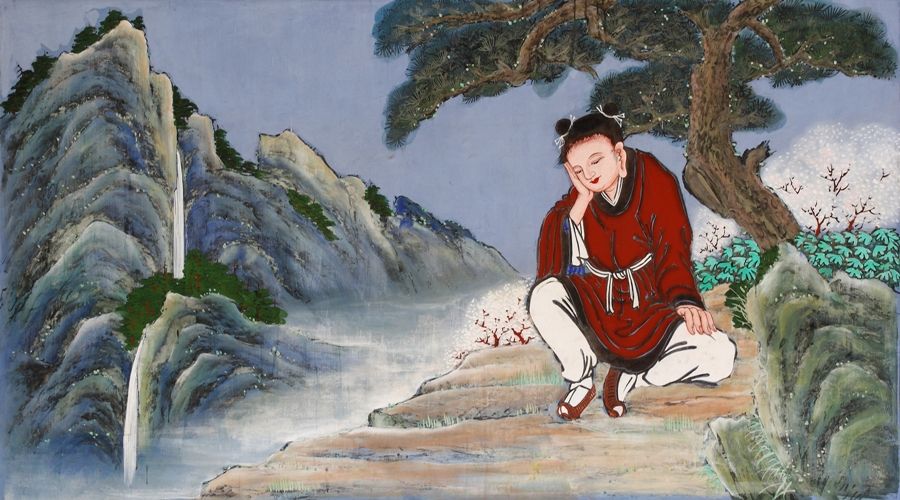
In the first painting, a boy sits under a pine tree, deeply contemplating questions of human existence, such as ‘Where did I come from?,’ ‘Where do I go after death?,’ ‘What is the purpose of life?,’ and ‘Where am I heading now?’ Through profound contemplation and introspection on these ultimate questions, the boy is to be awakened to persue the Dao.
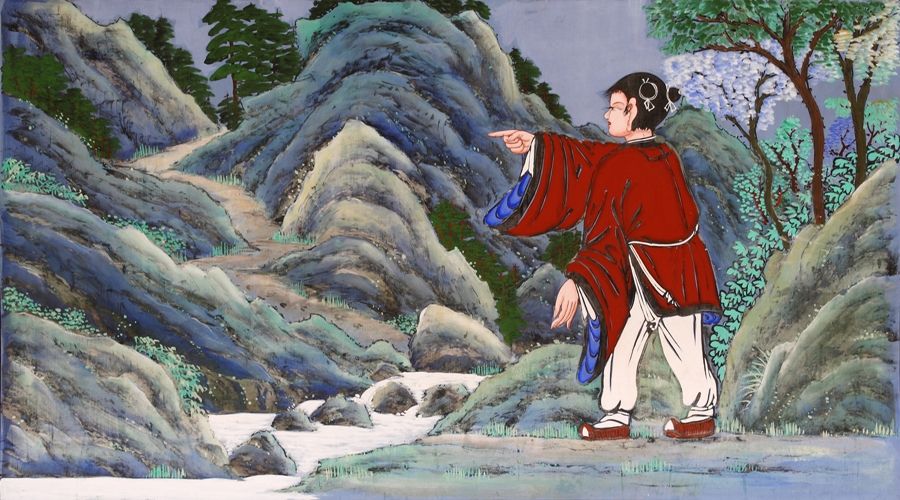
The boy has discovered the hoof prints left by the white ox. This stage symbolizes that the boy has just been introduced to the Great Dao and has decided to follow these hoof prints. The hoof prints represent the teachings of the Supreme God.
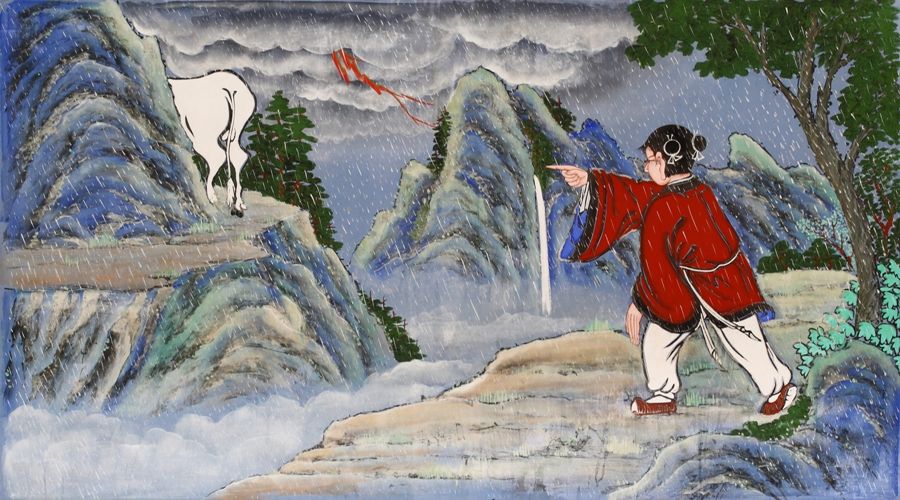
The boy catches a glimpse of the white ox, but from a distance, he can only see its hindquarters. To make matters worse, his path is blocked by lightning, heavy rain, and a steep cliff. This stage symbolizes the boy’s effort to apply what he has learned in real life. However, along the way, he encounters numerous obstacles and hardships, symbolized by the lightning, heavy rain, and the steep cliff. These obstacles and hardships represent the inevitable challenges Dao cultivators face on their spiritual path. In other words, once you begin cultivating the Great Dao of Daesoon Truth, dormant or latent negative karmas may manifest in various forms. Nevertheless, through persistent cultivation using our unprecedented Dharma methods, these negative karmas can gradually be resolved and cleared.
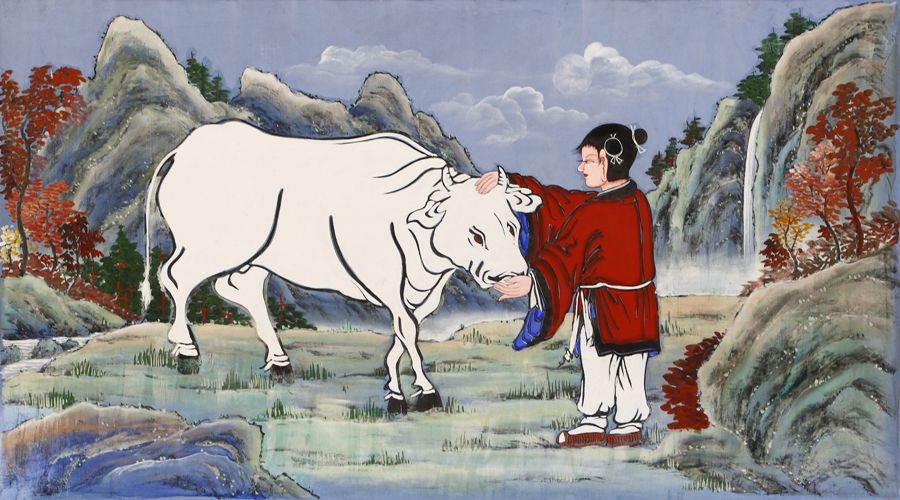
Although crossing the dangerous cliff seemed impossible, the boy somehow managed to do so and finally meets the white ox, even petting it. The sky has also cleared. This painting signifies the boy’s diligent self-refinement through spiritual cultivation with unwavering sincerity. While he has become familiar with the ox, he still carries negative karma, remnants from the Former World of mutual conflict. He must continue cultivating the Great Dao of Daesoon Truth, internalizing it into his mind and body until he is perfectly unified with the Dao.
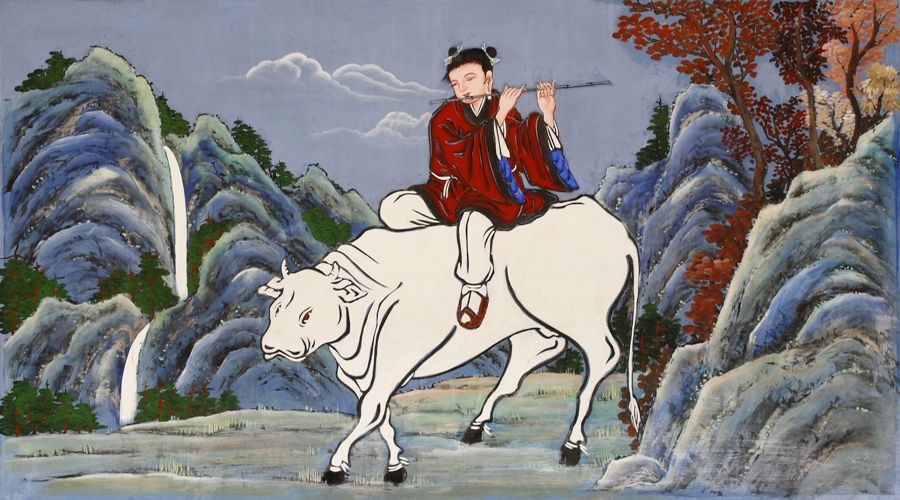
Riding on the back of the ox signifies that he has become one with it. In other words, he has reached the state where ‘The Dao is me and I am the Dao,’ indicating that he has achieved the ‘True State of Enlightenment in the Dao.’ Now, the boy has resolved all grudges and grievances manifesting in his mind and body and has finally cleared himself of all negative karma from the Former World. He is now in a complete state of a quiet mind and a quiet body, free from any agonies and distress of the secular world.
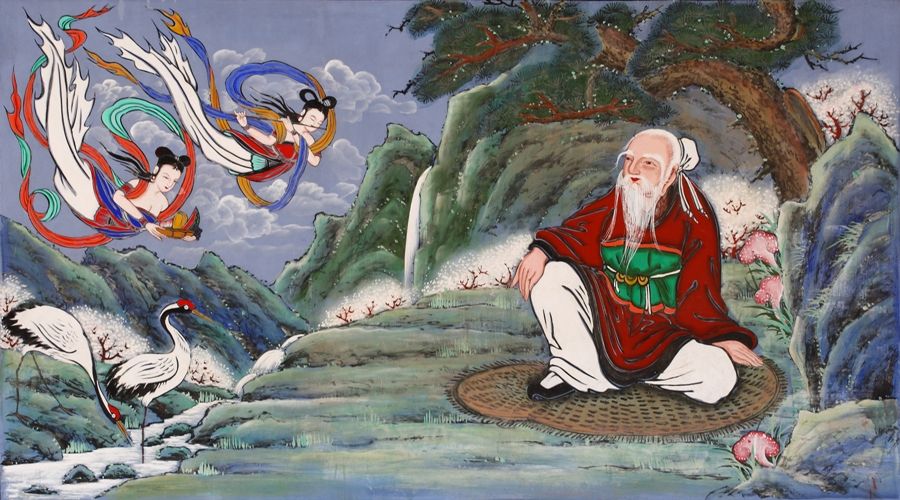
In this final painting, the boy has disappeared and been transformed into an Earthly Immortal. The place where the ox once stood has become a beautiful land where celestial maidens play music, and herbs of eternal youth are in full bloom. This is what we call the Earthly Paradise of the Later World, also known as Huchoen Paradise, where Daesoon Truth is fully realized across the entire world. In this world, humans become Earthly Immortals, and the world itself transforms into an Earthly Paradise. We, Daesoon Jinrihoe, are currently making our best efforts to establish this paradise on Earth by saving all spirits and humans through the Great Dao of the Supreme God.
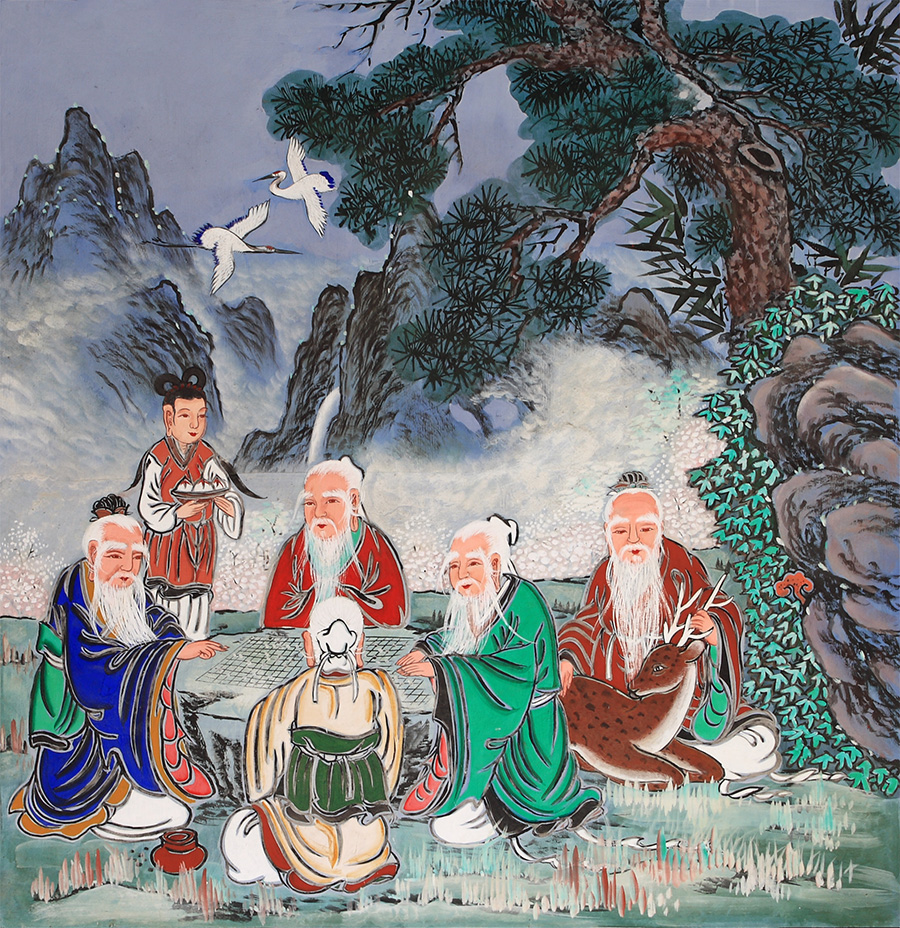
This mural depicts five immortals gathered around a Go board. Two immortals are playing Go, two are offering advice, and one serves as the host, focusing solely on providing hospitality. The host remains impartial, refraining from offering any advice, and ensures that the hospitality proceeds smoothly. Once the game concludes, the Go board and pieces are returned to the host, indicating Korea’s destined rise to prominence. Sangje said, “I will redirect the destiny of Joseon (Korea) by attaching the Dosu for resolving the grievance of Danzhu, the progenitor of Go, to the earth-energy hub of Mount Hoemunsan, known as the ‘Five Immortals Playing Go.’” Through Sangje’s Reordering Works, four neighboring powers will retreat, preoccupied with their domestic and international issues, allowing North and South Korea to reunify and spiritually lead the world. Sangje has paved the way for Korea to ascend as a leading nation in the Later World. On this journey toward an earthly paradise, the future will be filled with joy and hope.
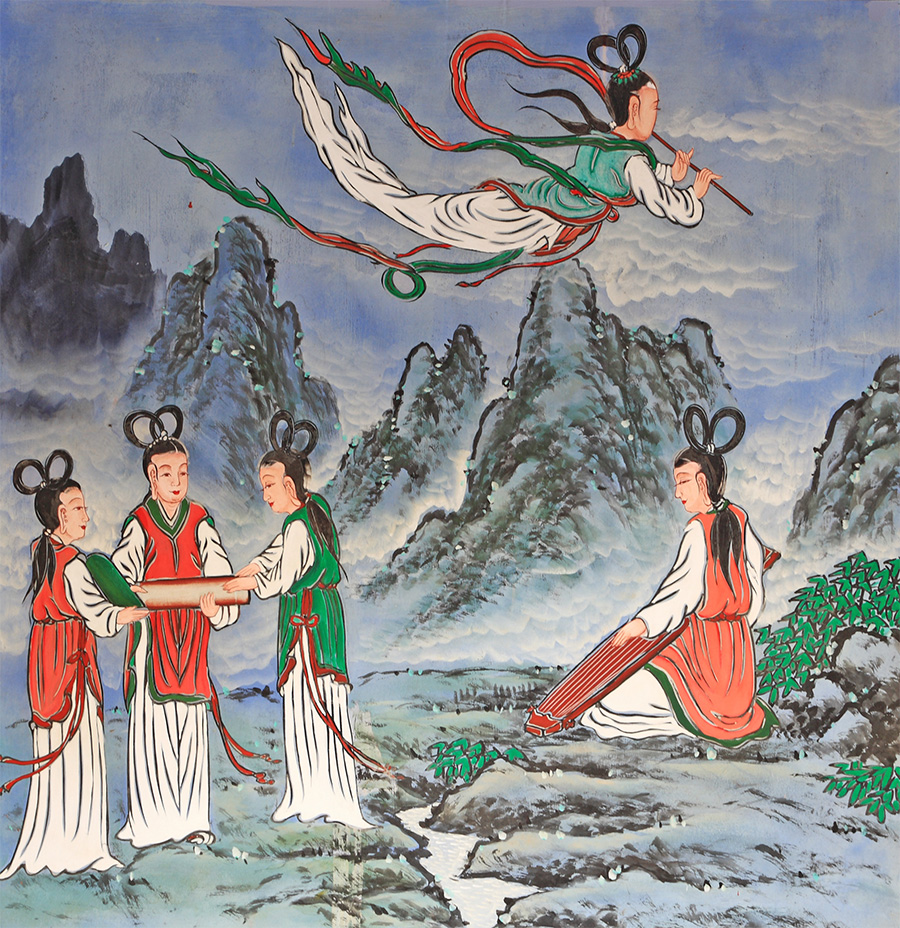
This mural depicts celestial maidens in silk robes flying through the sky while playing flutes, and on the ground, others are weaving silk and playing the geomungo. The painting Silk-Clad Humanity, which portrays celestial maidens crafting and delivering silk robes to humanity, symbolizes clothing the people of the Later World in silk garments. This act signifies the bestowal of heavenly culture and civilization upon humanity, heralding the arrival of a prosperous and harmonious world.
Sangje’s words, “Civilization and enlightenment will blossom across three thousand nations, and Daoist arts will unfold widely for ninety thousand miles,” illustrate a vision of a civilized and flourishing future for human society.
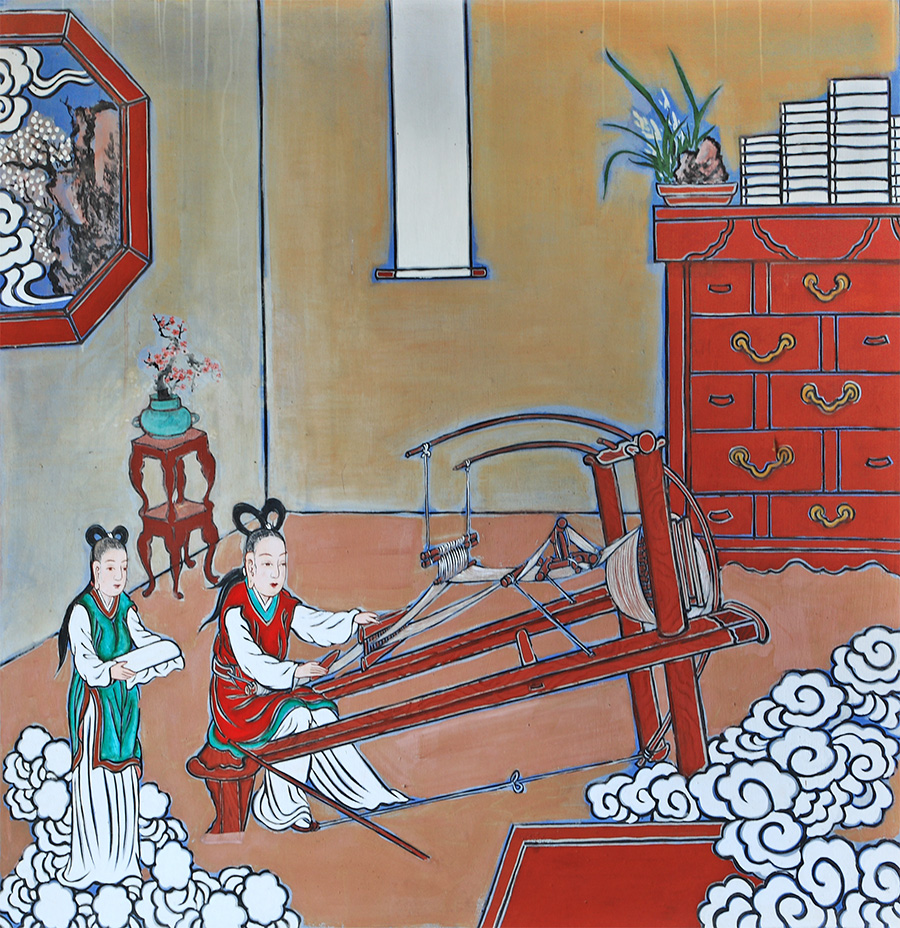
This mural depicts celestial maidens weaving silk fabric on a loom. The silk is formed by the interweaving of warp threads (vertical threads) and weft threads (horizontal threads), and each strand of these threads is referred to as ‘ol’ in Korean. Just as fabric is properly woven when each thread intersects correctly, this mural conveys the lesson that we must conduct ourselves in life according to principles and order.
There is an expression in Korean, ol-bareuda, which signifies that each strand of these threads is correctly interwoven. When the threads are correctly interwoven, it conveys the idea of being ‘correct’ or ‘right.’ In essence, it signifies that all things in the universe are fulfilling their respective roles in their rightful positions. Living a righteous life means practicing the Way of Being Human, the path that human beings are rightfully meant to follow. We must realize that Dao is yin-yang, yin-yang embodies principle, principle manifests as warp and weft, and warp and weft represent the universal law. By understanding this truth, we should cultivate ourselves to align the warp and weft of all things correctly, thereby establishing proper order and harmony in all aspects of our existence.
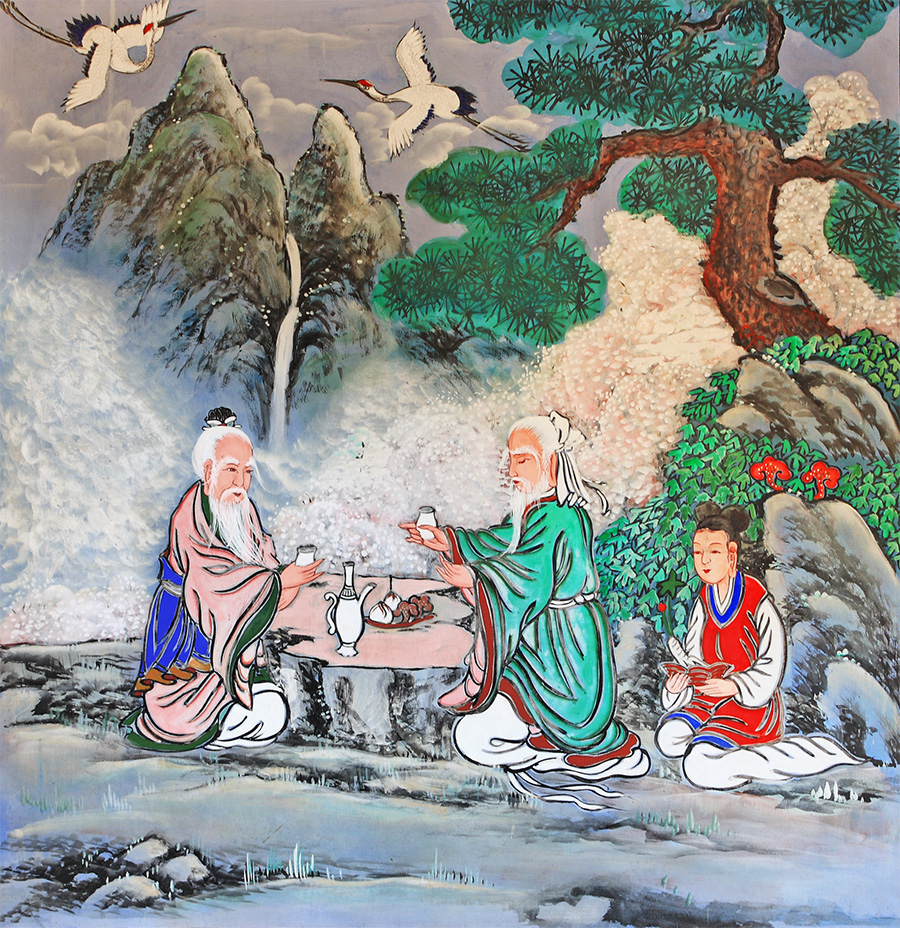
This mural depicts two immortals sitting across from each other and exchanging drinks, capturing humanity’s age-old aspiration for health and longevity realized in the physical world. Sangje foresaw the advent of a future world, saying, “In the Later World, people will attain eternal life, never growing old or dying. When a storage chest is opened, clothing and food will appear, and all nations will exist in harmony, free from jealousy and war.” Through the cultivation of Daesoon Truth, human beings undergo spiritual and physical renewal, ultimately becoming Earthly Immortals who embody an era of longevity and freedom from illness. In essence, this mural symbolizes the Later World, where humanity transcends disease and enjoys everlasting blessings and life.
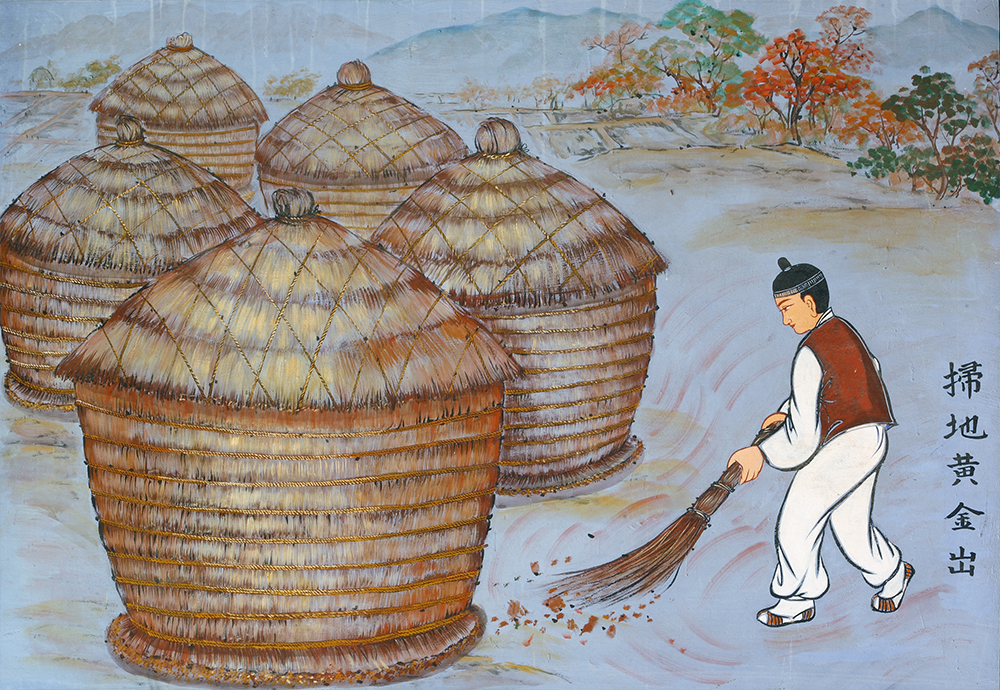
This mural inside the Pojeong Gate is called ‘Soji Hwanggeumchul (掃地黃金出),’ which literally means ‘Sweep the ground, and gold will be found.’ This mural depicts a farmer sweeping up grains that have fallen on the ground in the yard. The grains obtained as the result of a year’s farming are as precious as gold. It symbolizes that if Dao followers diligently cultivate their mind and body with sincerity, the rewards they gain will be as precious as gold.
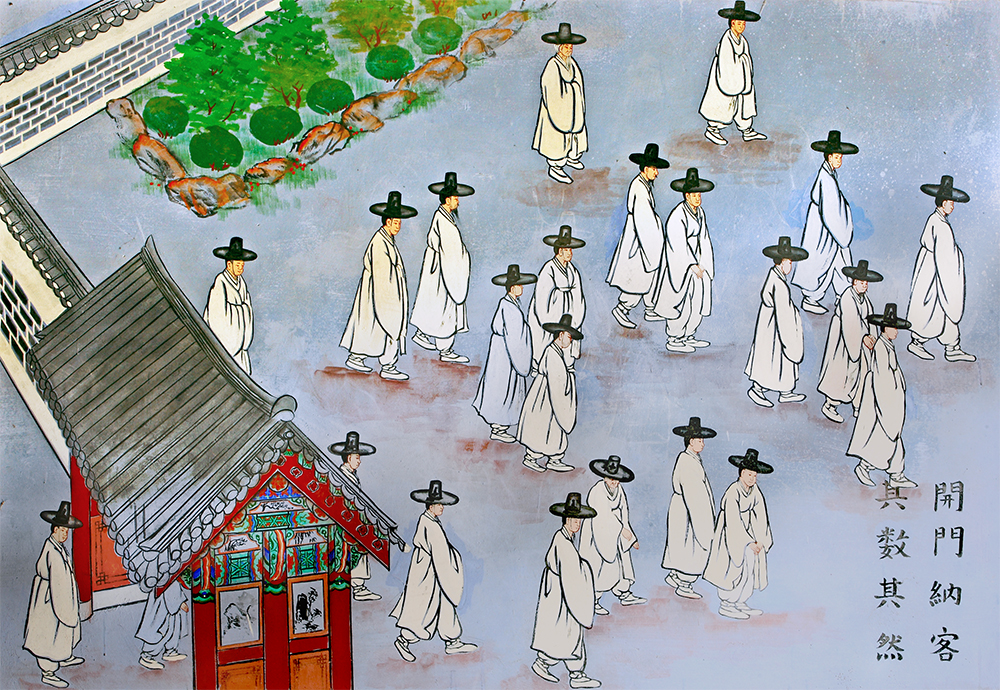
This mural, ‘Opening the Gates to Receive Guests,’ alongside ‘Sweeping the Ground and Revealing Gold,’ signifies that when the door is opened to welcome guests, the number of those who enter depends on the host's hospitality. Similarly, Dao practitioners should always keep their hearts wide open and cultivate virtue, striving to guide many people toward the teachings of Sangje, so they may find refuge and salvation.
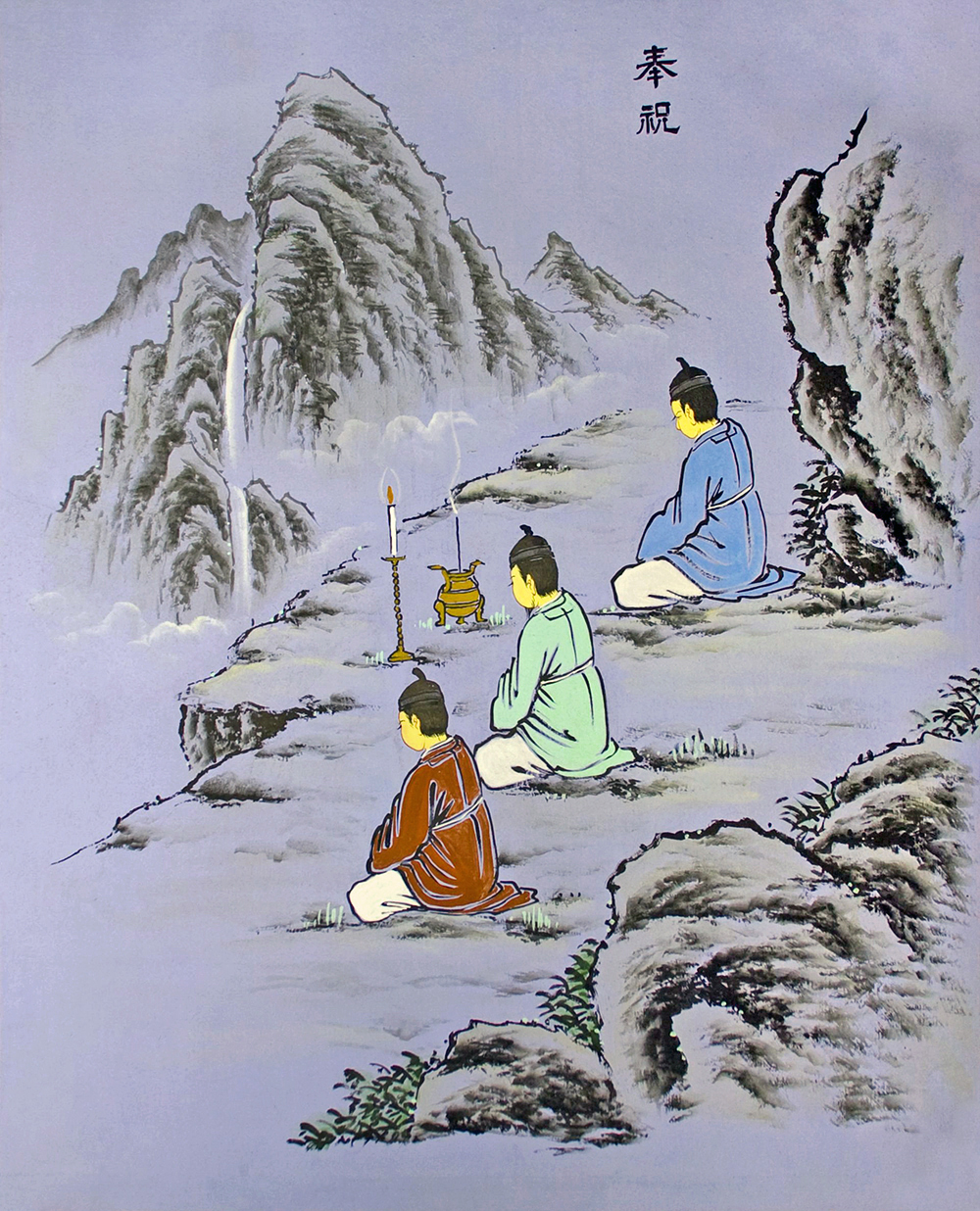
Bongchuk is the stage where one burns incense at the location determined by Dojeon, sits cross-legged, recites the incantation, and implores Sangje to attain absolute spiritual enlightenment and numinous penetration.
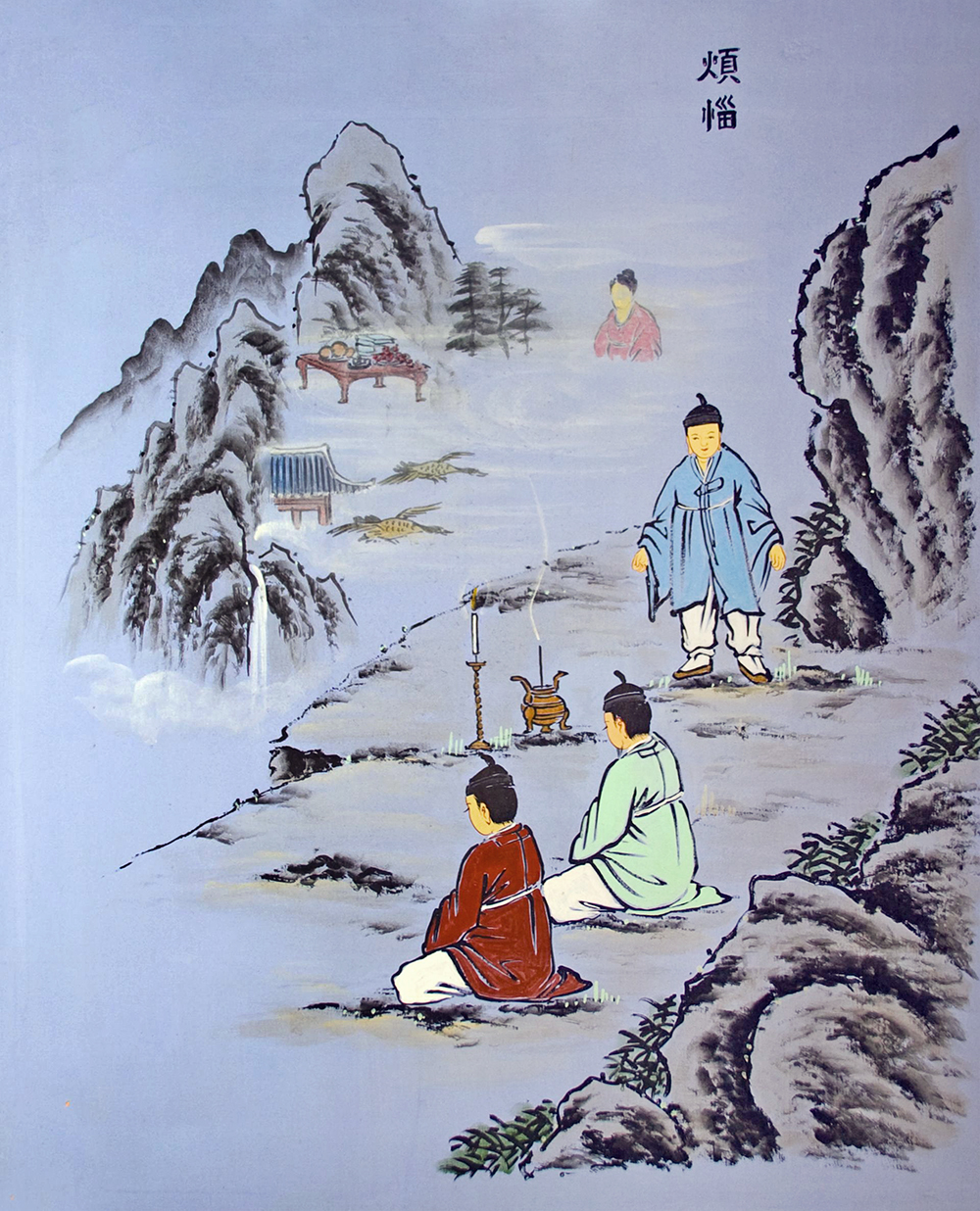
As one recites the Tae-eul Mantra consecutively, the first stage unfolds. This stage focuses on eliminating distracting thoughts and purifying the mind. However, during this process, afflictions may arise, much like how dirty water flows out first when washing clothes. If one’s dedication to Dao is weak, or if they frequently indulge in delusions and trivial matters, the mind becomes increasingly cluttered. As these distractions accumulate, dispelling them requires more time and effort, naturally extending the period of affliction.
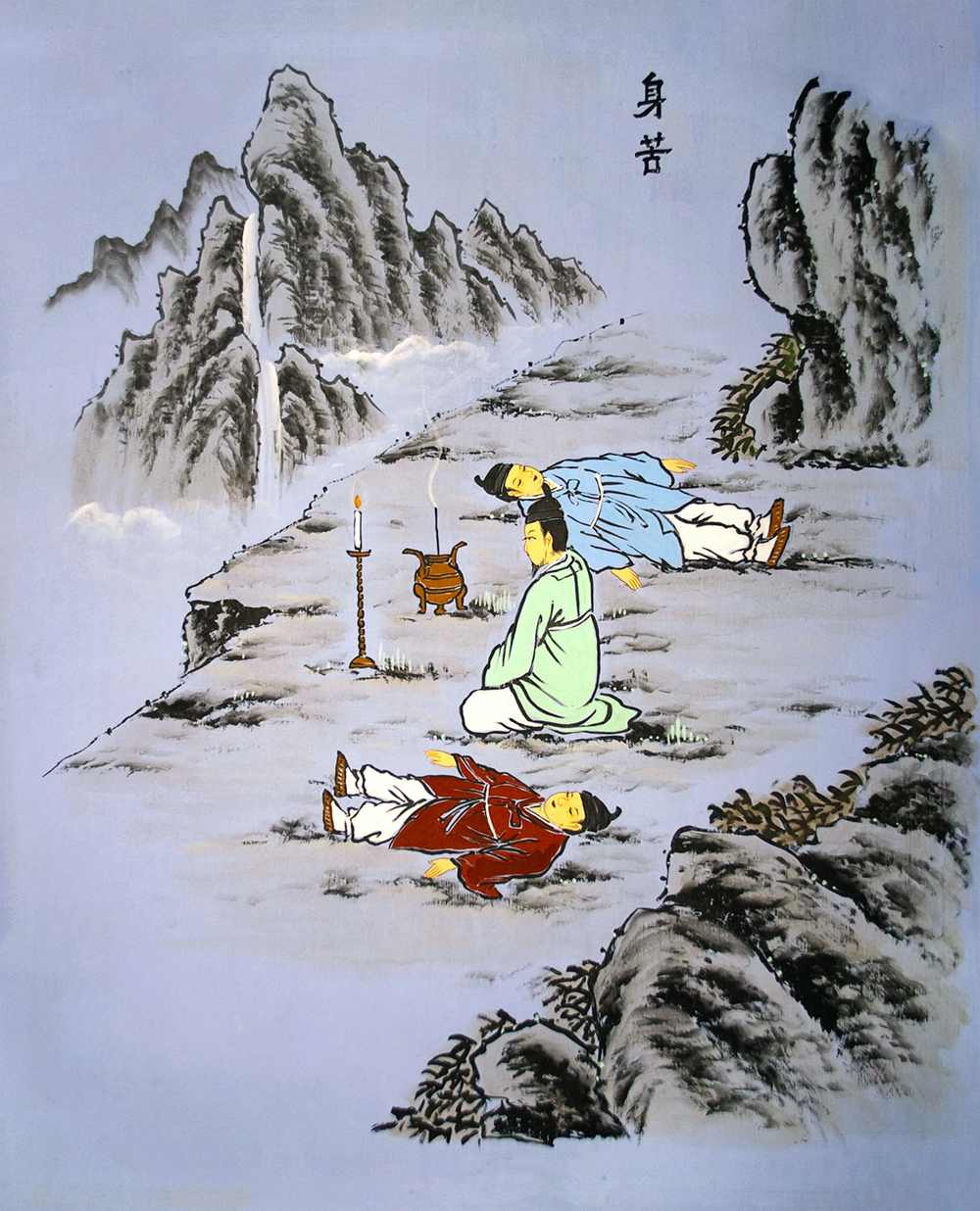
As one continues chanting the Tae-eul Mantra, the second stage emerges. This stage focuses on eliminating negative energy from the body to achieve physical perfection, free from diseases or damage. However, during this stage, bodily pain arises. This pain stems from ‘cheok,’ a grudge or vengeful energy harbored by others—whether people or spirits—due to thoughtless, arrogant, or rude behavior, or harsh words. When such energy is held by a spirit, it is referred to as a ‘Cheok-spirit.’ In this stage, dormant ‘cheok’ accumulated within the body begins to manifest, causing various forms of discomfort. As one works to resolve these ‘cheok,’ physical pain naturally arises. Therefore, if Dao-cultivators lack sincerity, respectfulness, or faithfulness in their practice, the stage of Physical Suffering will be prolonged.
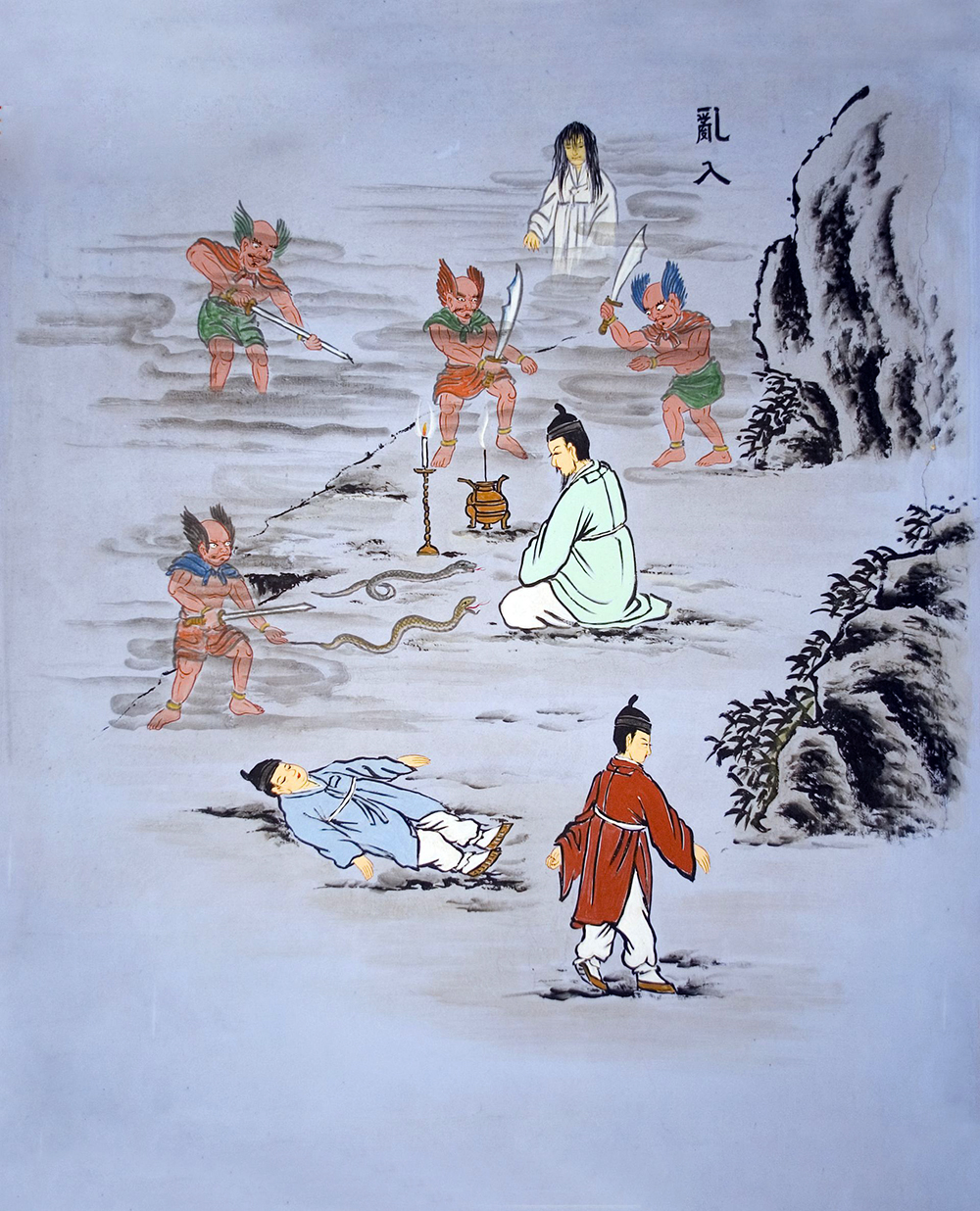
As one continues chanting the Tae-eul Mantra, the third stage arises. This stage measures a person’s capacity, with phenomena such as temptation and fear emerging. In daily life, various fears or desires can weaken the mind or diminish the strength to overcome difficulties, leading to a petty mind, lacking fairness and justice. Therefore, if Dao-cultivators lack sincerity in their practice and do not sufficiently resolve their negative karmas, fears and temptations may arise. These illusionary forces can cause one to faint from fear or act irrationally. Consequently, it becomes difficult to pass through the stage of the Entry of Delusion.
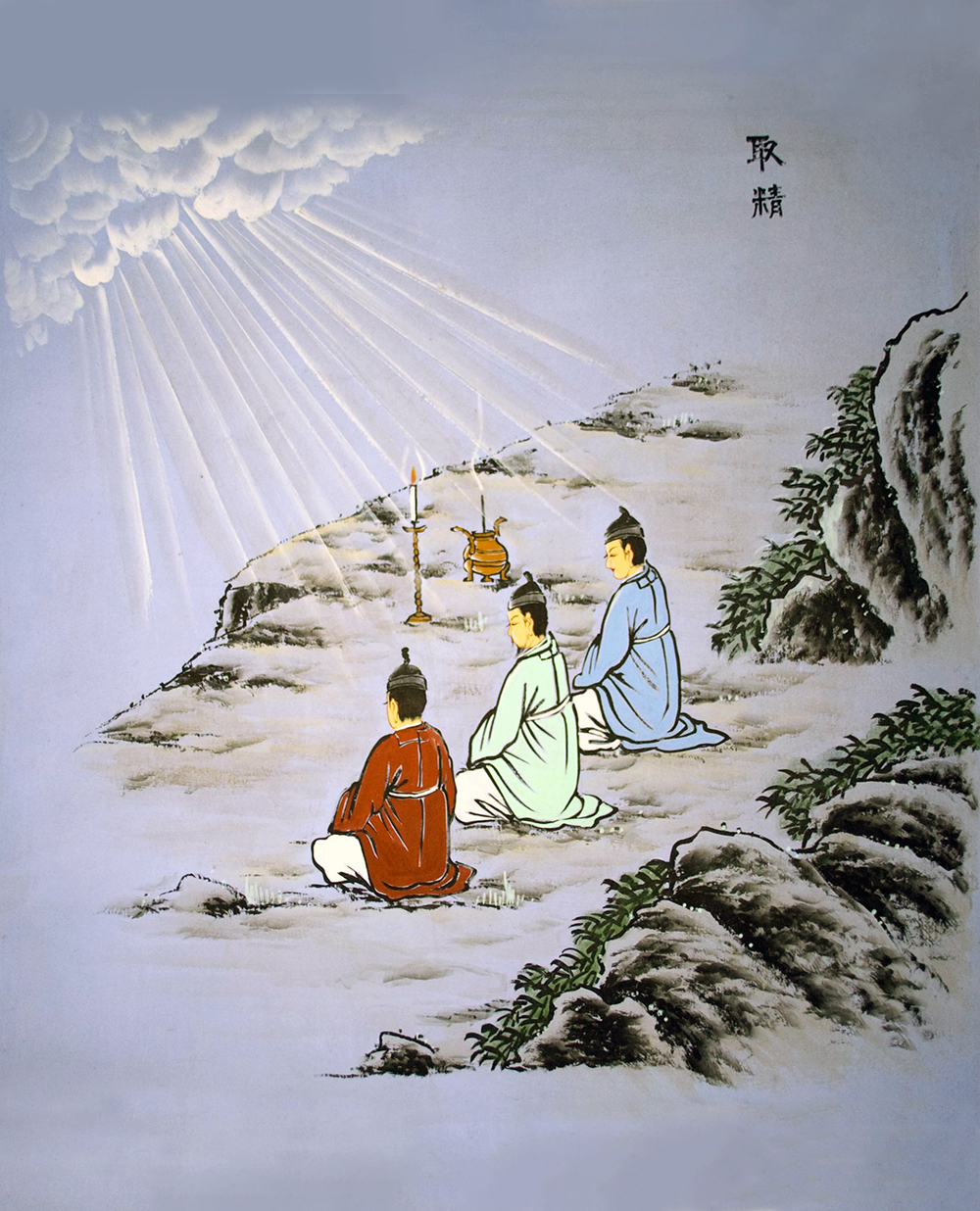
This is the fourth stage that arises as one continues the process of chanting the Tae-eul Mantra. At this stage, the chanting flows smoothly, the body feels at ease, and one enters a state of egolessness. This is the stage where divine energy gathers within the body.
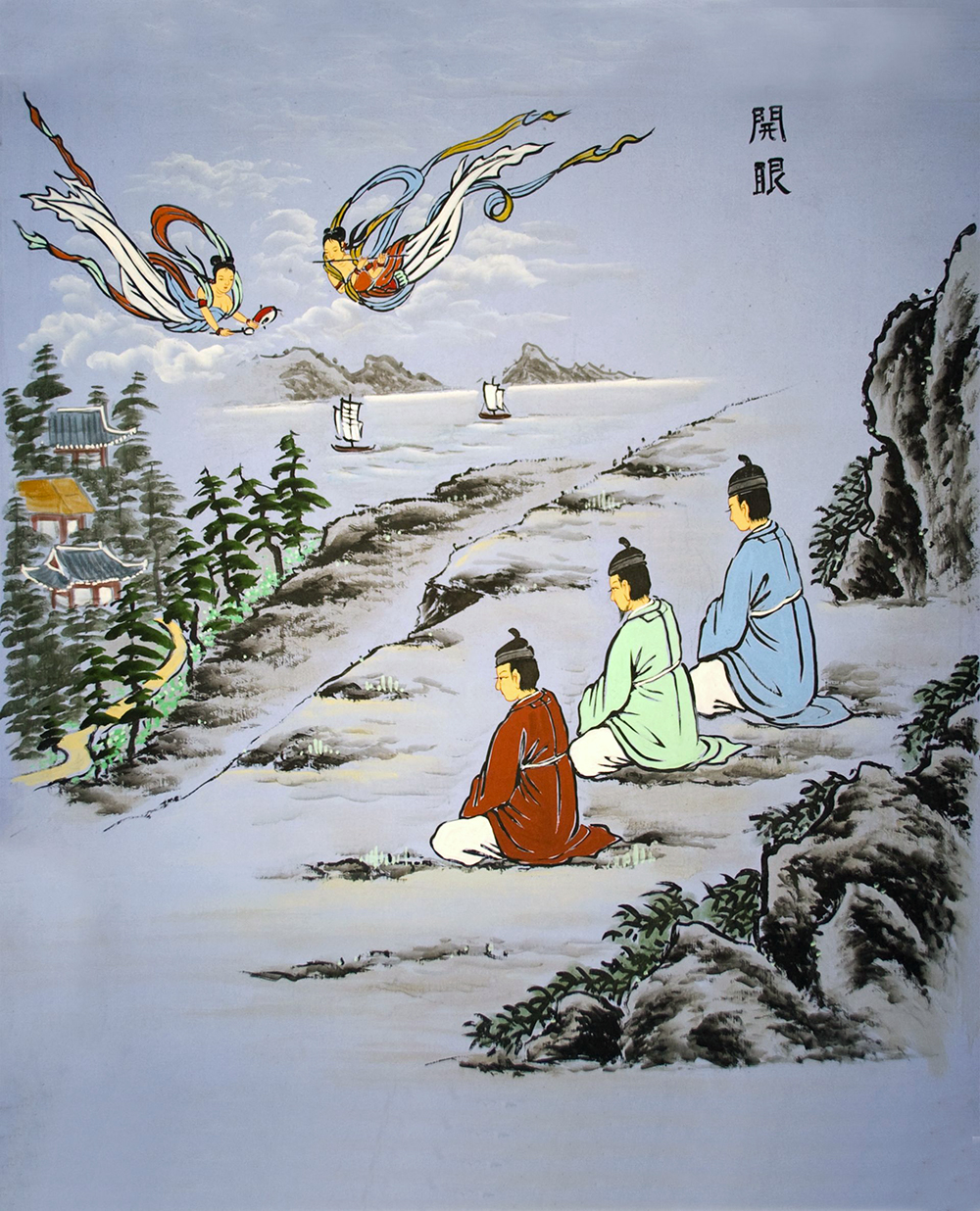
This is the fifth and final stage that arises while chanting the Mantra. It is the stage of spiritual enlightenment along with the opening of the divine eye, where one’s wisdom becomes so fully illuminated that they can completely understand the past, present, and future, as well as the worlds in all directions.